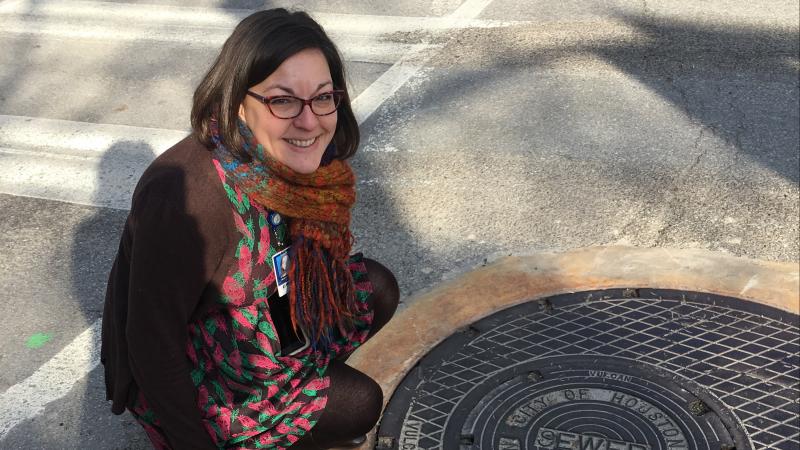
Engineering may not have been the direction Heather Dodds expected her life to take, but then again, she wasn’t sure what direction it would take.
“I was that person who didn’t know what they wanted to be when they grew up,” she said. So she might not have planned on becoming an engineer, and she probably never expected to find herself overseeing a massive capital project on one of MSD’s most critical assets.
Long before that, the Clarksville, Indiana native had set herself on a life path, majoring in political science and sociology at the University of Louisville and eventually working for the university after graduation.
It was during this time that she read “The Great Bridge” by David McCullough, on the building of the Brooklyn Bridge. “My boss at UofL loaned it to me because they felt I would be interested in the social and political impact of the bridge, but I was also drawn to the engineering challenge,” she said. It sparks an interest in her that led to returning to UofL as an engineering student.
Though engineering is often a male-dominated field, Dodds said she sees women entering civil engineering as an opportunity to make a positive change in society. “Women are drawn to service work, and civil engineering opens the door to serving your community and the public,” she said.
Dodds came to MSD in 2011, starting in Flood Protection at CMF and eventually moving to Asset Management. It appeals to the part of her personality that enjoys finding problems and then finding solutions. “I like improving workflow and finding efficiencies so that we can make the best use of ratepayer dollars.”
However, Dodds admits nothing prepared her for the Main Street repair. It began when MSD commissioned an inspection of the concrete Ohio River Interceptor in November 2017, with technology to allow engineers to analyze the pipe without having to empty it. The resulting March 2018 report revealed that some of the concrete and rebar support systems had worn away between Fourth and Seventh streets.
“I was sick to my stomach watching the video,” Dodds said. “I had never seen anything like it.” The pipe was a critical asset, carrying 40 percent of the community’s wastewater to the Morris Forman Water Quality Treatment Center for treatment and release to the Ohio River.
Immediate action was needed. Dodds became the primary engineer on the project, and within two months, a repair team was put together to find a solution. The $20 million repair project’s most significant challenge was finding a way to move flow off of the pipe so workers could go underground and make repairs.
“We essentially constructed a pump station and built an above-ground sewer system so we could pump wastewater out and reroute it along River Road to Ninth Street and back into the system,” she said. MSD contractors could then enter to install corrosion-resistant PVC panels inside the existing pipe, in essence forming a new pipe inside the old pipe.
When the project wrapped in December, Dodds said she breathed a sigh of relief. “I had a terrific group of construction workers and consultants who rose to the challenge,” she said.
Dodds said solving these problems is a satisfying aspect of her work life. “I know that I’m helping improve my community, and my children’s future, as well as getting to make the lives of my co-workers easier,” she said.


